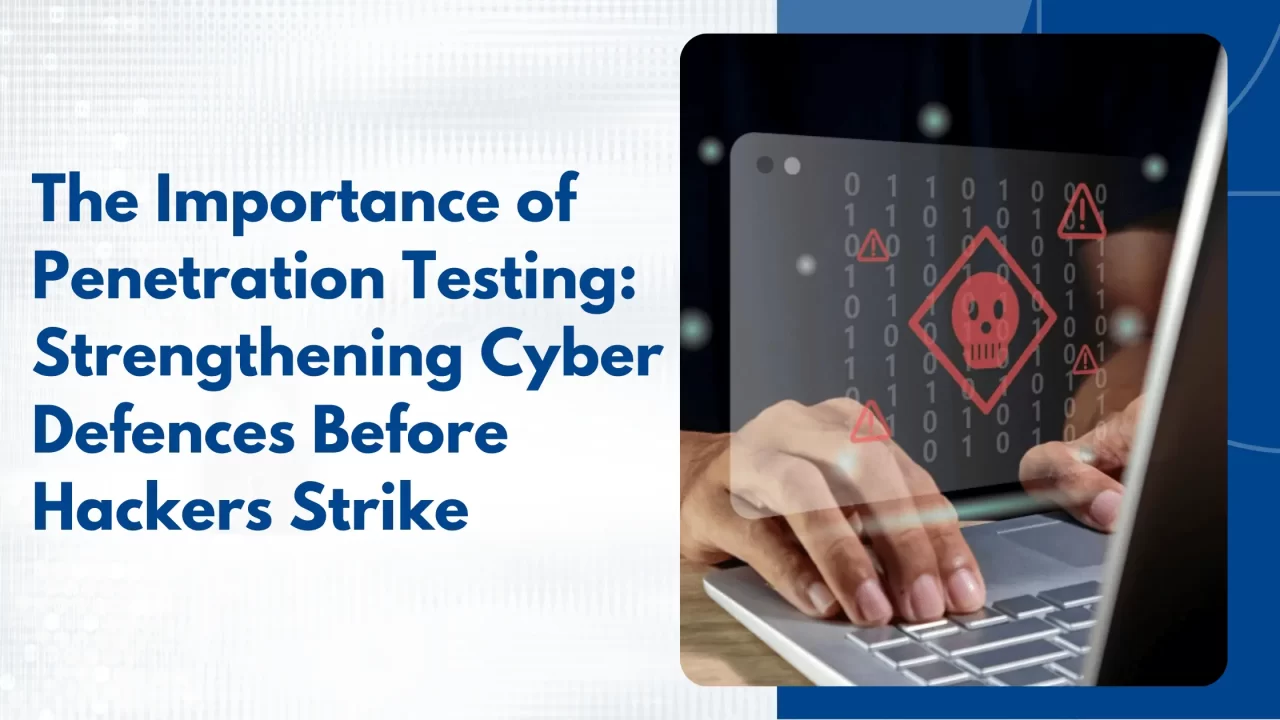In today’s high-stakes digital environment, cyber threats are not a matter of “if” but “when.” Businesses of all sizes are constantly at risk of data breaches, ransomware attacks, and insider threats. While preventive security measures like firewalls, encryption, and endpoint protection are essential, they are not foolproof. This is where penetration testing becomes a critical component of a proactive cybersecurity strategy.
This blog explores what penetration testing is and why it matters, the various types of penetration tests and their benefits, and how businesses can implement effective testing practices to stay ahead of cyber attackers.
What Is Penetration Testing and Why Does It Matter?
Penetration Testing (Pen Testing) is a simulated cyberattack conducted by ethical hackers to evaluate the security of an IT infrastructure. Its purpose is to identify and exploit vulnerabilities in systems, networks, or applications—just as a malicious actor would—to understand the potential impact of a real-world attack.
Why It Matters:
- Reveals Hidden Vulnerabilities: Even the most well-configured systems may have unseen weaknesses. Pen tests expose these issues before they can be exploited.
- Prepares Incident Response: By understanding how an attack could occur, businesses can refine their response plans.
- Validates Security Controls: Pen testing helps assess whether existing security measures (firewalls, antivirus, IAM) are truly effective.
- Compliance Requirements: Many regulations such as PCI DSS, ISO 27001, and HIPAA require or recommend regular penetration testing.
- Prevents Financial and Reputational Damage: Identifying vulnerabilities before hackers do helps prevent data loss, service downtime, and damage to customer trust.
Types of Penetration Testing and Their Benefits
Depending on the objective, infrastructure, and security concerns, penetration testing comes in various forms. Each type offers distinct advantages.
1. Network Penetration Testing
This test simulates attacks on an organisation’s network infrastructure to uncover vulnerabilities like open ports, misconfigured firewalls, and insecure protocols.
Benefits:
- Identifies risks to internal and external networks
- Enhances firewall and IDS/IPS configuration
- Reduces exposure to common network-based threats
2. Web Application Penetration Testing
This involves testing web-based apps for common vulnerabilities such as SQL injection, XSS (Cross-site scripting), CSRF (Cross-site request forgery), and broken authentication.
Benefits:
- Ensures secure user input handling
- Protects sensitive data such as credentials and payment information
- Improves overall application coding practices
3. Wireless Network Penetration Testing
Tests the security of wireless protocols (e.g., WPA2, WPA3) and identifies rogue access points, weak encryption, and insecure configurations.
Benefits:
- Secures Wi-Fi infrastructure
- Prevents unauthorised network access via wireless devices
- Helps secure BYOD (Bring Your Own Device) environments
4. Social Engineering Penetration Testing
Simulates phishing emails, pretexting calls, or physical attempts to gain access through manipulation.
Benefits:
- Evaluates employee security awareness
- Highlights human vulnerabilities in security protocols
- Improves staff training and internal communication
5. Physical Penetration Testing
Assesses the security of physical assets by simulating attempts to access restricted areas, data centers, or office premises.
Benefits:
- Identifies weaknesses in building security
- Ensures visitor policies and physical access controls are effective
6. Cloud Penetration Testing
Examines the security posture of cloud-based infrastructure, including configuration flaws, IAM policies, and data exposure risks.
Benefits:
- Verifies security of cloud workloads and SaaS environments
- Prevents data breaches due to misconfigurations
- Aligns cloud usage with compliance standards
How Businesses Can Conduct Effective Penetration Testing
Implementing a successful penetration testing strategy involves more than running a few vulnerability scans. It requires planning, expertise, and continuous refinement.
1. Define Clear Objectives
Understand what you want to test—network, application, employees, or physical premises. Set specific goals and scope for each pen test.
2. Choose the Right Testing Methodology
- Black Box Testing: Simulates an external attack with no internal knowledge
- White Box Testing: Simulates an insider attack with full system knowledge
- Grey Box Testing: A mix of both, where partial knowledge is provided
3. Engage Qualified Ethical Hackers
Partner with certified professionals (e.g., OSCP, CEH) or a trusted security firm. Ensure they follow standard methodologies like OWASP, PTES, or NIST.
4. Schedule Regular Testing
Penetration testing should be performed regularly—annually at minimum, and after major system changes such as new application deployments or infrastructure upgrades.
5. Document and Prioritise Findings
Post-assessment, ensure detailed reports are provided with:
- Description of each vulnerability
- Risk rating and potential impact
- Remediation recommendations
Prioritise high-risk issues for immediate action.
6. Remediate and Retest
Fix vulnerabilities and conduct a follow-up test to ensure all identified issues have been resolved. This iterative approach strengthens long-term security.
7. Foster a Security-Aware Culture
Use pen test insights to train employees, refine access controls, and update incident response protocols.
Conclusion
Cybersecurity threats are constantly evolving, and businesses cannot afford to be reactive. Penetration testing is a proactive approach that enables organisations to identify vulnerabilities, assess risks, and strengthen defences before hackers strike.
By incorporating regular and comprehensive pen tests into your cybersecurity strategy, you gain more than just technical insights—you build resilience, ensure compliance, and foster trust with your customers and partners.
In the world of cybersecurity, prevention is always better than cure. With penetration testing, businesses can ensure they stay one step ahead of potential attackers.



